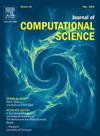基于变保真度模型的拓扑不可知平面天线特征辅助开发策略
IF 3.7
3区 计算机科学
Q2 COMPUTER SCIENCE, INTERDISCIPLINARY APPLICATIONS
引用次数: 0
摘要
当代应用天线的设计是一项复杂的挑战,它将认知驱动的拓扑发展与通过严格的数值优化对参数进行细致调整相结合。然而,该过程可以通过强调结构几何形状的自动确定来简化,潜在地减少对传统方法的依赖,传统方法在天线开发过程中严重依赖工程洞察力。在这项工作中,这是我们的会议论文[1]的延伸,通过利用专注于带宽特定设计和带宽增强优化的两种策略,考虑了面向规范的拓扑不可知天线设计。该过程嵌入在可变保真度框架中,其中低保真度优化涉及随机生成拓扑的分类,然后使用基于特征的结构响应表示的信任区域算法进行局部调整。最后的结果只需要几个高保真度的模拟就可以了。在一个关于自动生成三个不同参数的散热器的案例研究基础上,对所考虑的策略进行了验证。还考虑了算法对更标准的优化方法的基准测试,以及与文献中最先进的天线相比所获得的拓扑结构的比较。本文章由计算机程序翻译,如有差异,请以英文原文为准。
Strategies for feature-assisted development of topology agnostic planar antennas using variable-fidelity models
Design of antennas for contemporary applications presents a complex challenge that integrates cognitive-driven topology development with the meticulous adjustment of parameters through rigorous numerical optimization. Nevertheless, the process can be streamlined by emphasizing the automatic determination of structure geometry, potentially reducing the reliance on traditional methods that heavily rely on engineering insight in the course of antenna development. In this work, which is an extension of our conference paper [1], a specification-oriented design of topologically agnostic antennas is considered by utilizing two strategies focused on bandwidth-specific design and bandwidth-enhanced optimization. The process is embedded within a variable-fidelity framework, where the low-fidelity optimization involves classification of randomly generated topologies, followed by their local tuning using a trust-region algorithm applied to a feature-based representation of structure response. The final result is then tuned using just a handful of high-fidelity simulations. The strategies under consideration were verified on a case study basis concerning automatic generation of three radiators with varying parameters. Benchmarks of the algorithm against more standard optimization methods, as well as comparisons of the obtained topologies with respect to state-of-the-art antennas from literature have also been considered.
求助全文
通过发布文献求助,成功后即可免费获取论文全文。
去求助
来源期刊

Journal of Computational Science
COMPUTER SCIENCE, INTERDISCIPLINARY APPLICATIONS-COMPUTER SCIENCE, THEORY & METHODS
CiteScore
5.50
自引率
3.00%
发文量
227
审稿时长
41 days
期刊介绍:
Computational Science is a rapidly growing multi- and interdisciplinary field that uses advanced computing and data analysis to understand and solve complex problems. It has reached a level of predictive capability that now firmly complements the traditional pillars of experimentation and theory.
The recent advances in experimental techniques such as detectors, on-line sensor networks and high-resolution imaging techniques, have opened up new windows into physical and biological processes at many levels of detail. The resulting data explosion allows for detailed data driven modeling and simulation.
This new discipline in science combines computational thinking, modern computational methods, devices and collateral technologies to address problems far beyond the scope of traditional numerical methods.
Computational science typically unifies three distinct elements:
• Modeling, Algorithms and Simulations (e.g. numerical and non-numerical, discrete and continuous);
• Software developed to solve science (e.g., biological, physical, and social), engineering, medicine, and humanities problems;
• Computer and information science that develops and optimizes the advanced system hardware, software, networking, and data management components (e.g. problem solving environments).
 求助内容:
求助内容: 应助结果提醒方式:
应助结果提醒方式:


